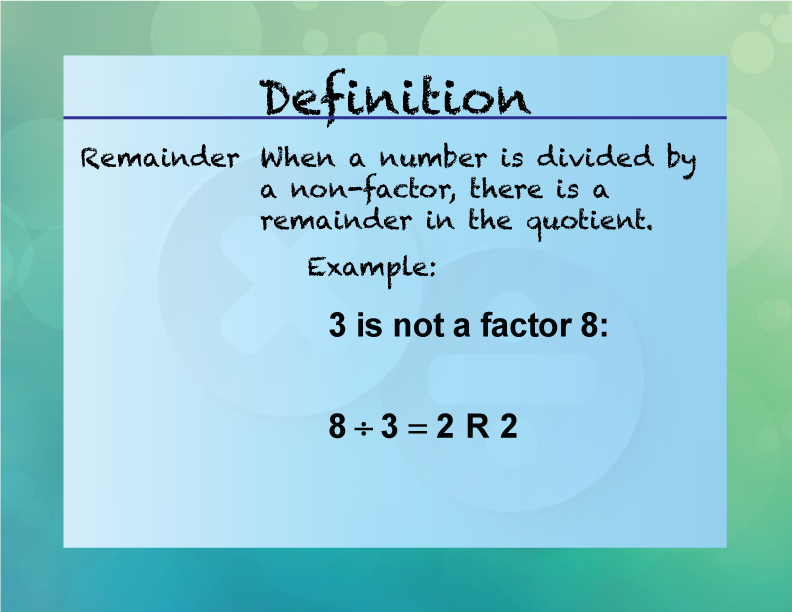
Display Title
Elementary Definition--Multiplication and Division Concepts--Remainder
Display Title
Remainder

Topic
Multiplication and Division
Definition
The remainder is the amount left over after division when one number does not divide the other exactly.
Description
The remainder is the leftover amount after dividing one number by another. For example,
| When 17 is divided by 5, | the quotient is 3 | and the remainder is 2. |
Understanding remainders is crucial for solving division problems and for understanding concepts such as fractions and modular arithmetic. Remainders are used in various fields, including computer science, cryptography, and number theory, to solve real-world problems. Teaching students about remainders and how to interpret them helps them develop a strong foundation in mathematics and enhances their ability to solve complex problems.
Teacher script: "The remainder is what's left over when you divide numbers. If you divide 14 by 4, the quotient is 3 and the remainder is 2."
For a complete collection of terms related to Multiplication and Division click on this link: Multiplication and Division Collection
| Common Core Standards | CCSS.MATH.CONTENT.4.OA.B.4, CCSS.MATH.CONTENT.3.OA.C.7, CCSS.MATH.CONTENT.3.OA.B.5 |
|---|---|
| Grade Range | 2 - 4 |
| Curriculum Nodes |
Arithmetic • Multiplication • Multiplication Expressions and Equations |
| Copyright Year | 2021 |
| Keywords | multiplication, division, equation |